Buddhist Monk's Self-Immolation: The Flame that changed the World
Categories: History
By Pictolic https://pictolic.com/article/buddhist-monks-self-immolation-the-flame-that-changed-the-world.htmlThit Quang Duc is a Buddhist monk from Vietnam, who went down in history and became a symbol of the struggle for equality of religions and freedom of conscience. This brave man sacrificed himself by committing an act of self-immolation in a square in Saigon. His feat changed Vietnam and forced the world to look differently at regimes that infringe on people's right to freedom of religion.
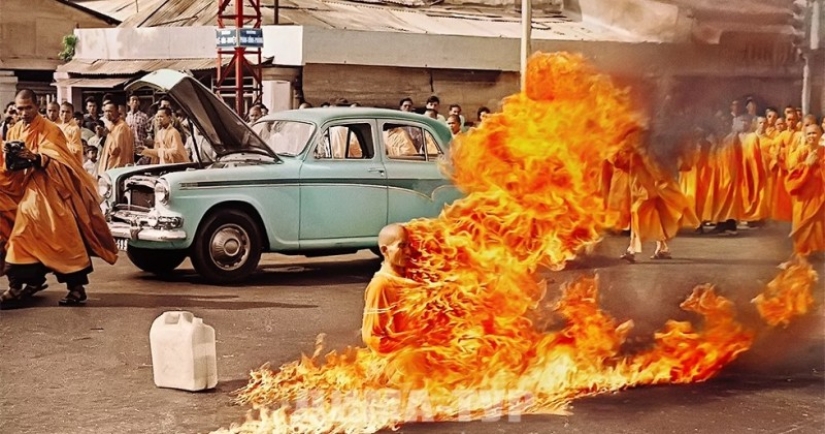
We know about the birth and childhood of Thit Quang Duc from the records of Buddhist monks. He was born in the village of Hoikhan, in the Vietnamese province of Khanh Hoa. The boy felt his vocation to monasticism at the age of 7. It was at this age that he began to study the philosophy of this faith and its sacred texts.
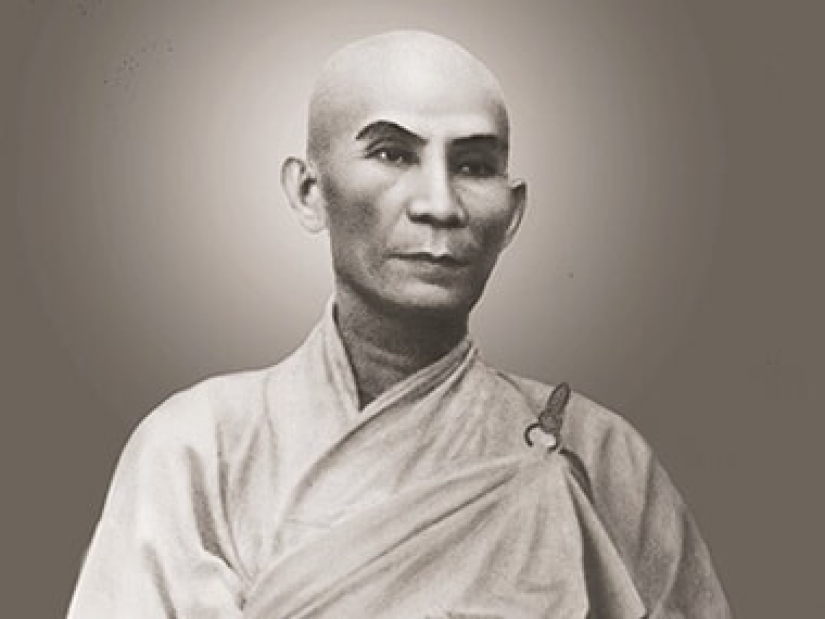
His maternal uncle was a monk and it was he who helped the boy to take the first steps in the faith. At the age of 15, Duc took his first monastic vow, and at the age of 20 he became a monk. After the initiation, the guy chose a difficult path – he went to the mountains and became a hermit for three years.
A few years later, Dyk and other monks built a pagoda on the site of his hermitage. But he couldn't sit still – the man decided to become an itinerant preacher and began to carry the truth to different parts of Vietnam. After several years of wandering, Duc settled in a pagoda near the city of Nha Trang and became a prominent spiritual figure.
Thit Quang Duc has done a lot for the spiritual and social life of Khanh Hoa province. He promoted the construction of ten temples and taught the local population literacy, writing and Buddhist canons.
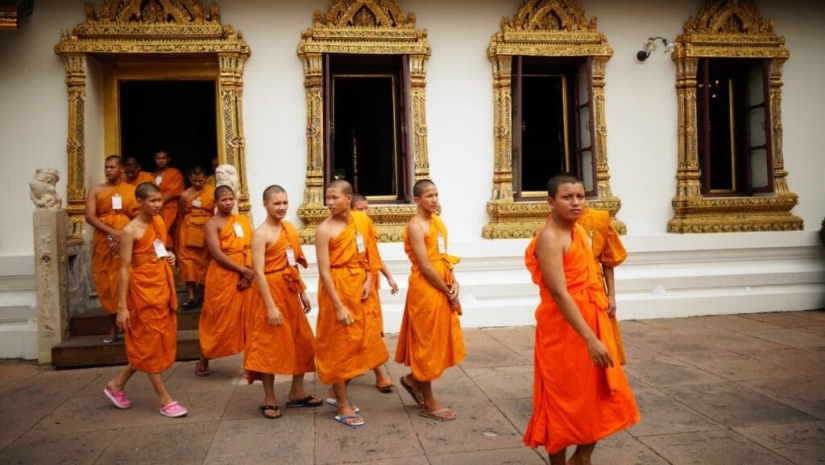
For two years, the monk wandered around neighboring Cambodia, studying Buddhist texts and communicating with the monks of this country. Having significantly increased his level of knowledge, Duc decided to study ancient texts and became the head of the Vietnamese Association of Buddhist Studies.
Traditionally, Vietnam is a Buddhist country. At the time of Dyk, in the first half of the 20th century, 90% of the population professed this religion. But the colonial French authorities actively planted Catholicism. The aggressive policy of the Europeans was continued by Ngo Dinh Ziem, the Catholic president of independent Vietnam.
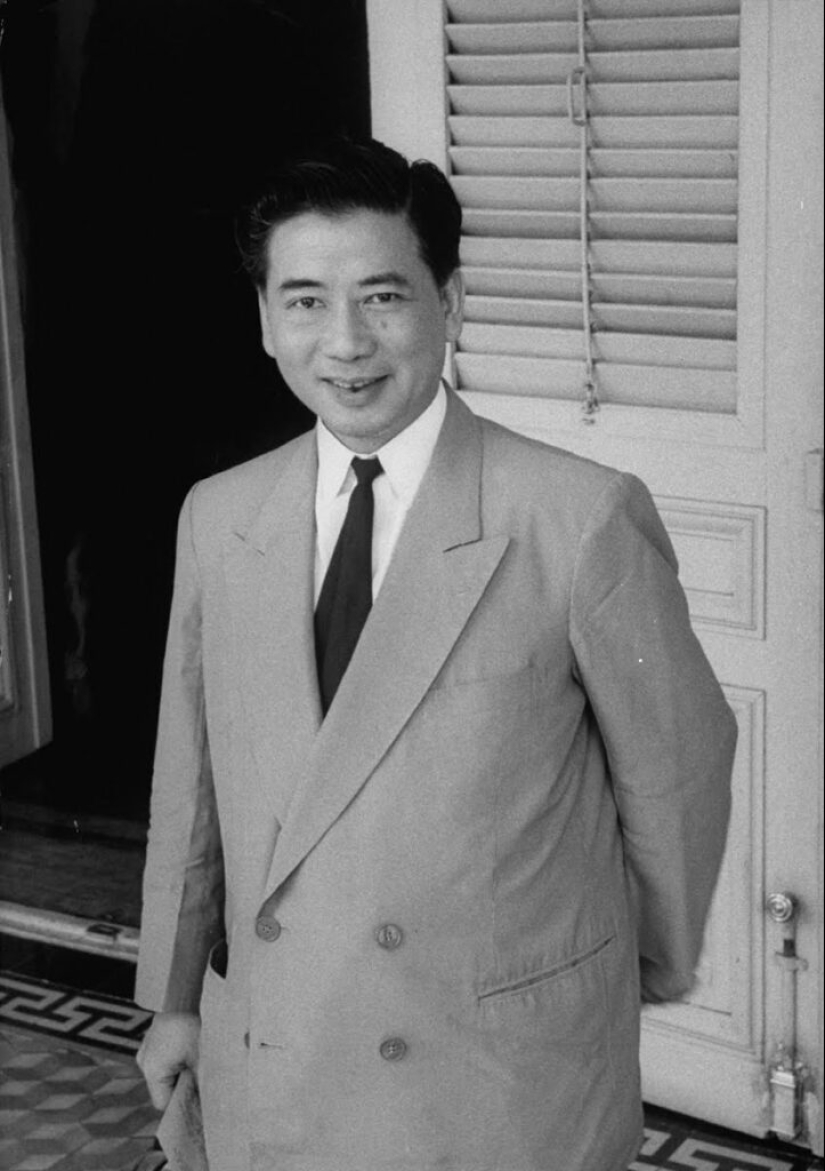
In the 50s, the head of state began to actively fight the communist ideology. But Buddhists, whom Ziem hated with all his soul, also came under the pressure of the authorities. Vietnam has turned into a state where adherents of traditional religion have become second-class people. The way to the governing bodies was closed to them, tax obligations were increased for them, they were deprived of the distribution of land plots.
Illegal armed formations led by zealous Catholics have appeared in the country. With the connivance of the authorities, they forcibly converted peasants to Christianity, destroyed Buddhist shrines and destroyed ancient manuscripts. Many voluntary apostates have appeared among the Buddhists.
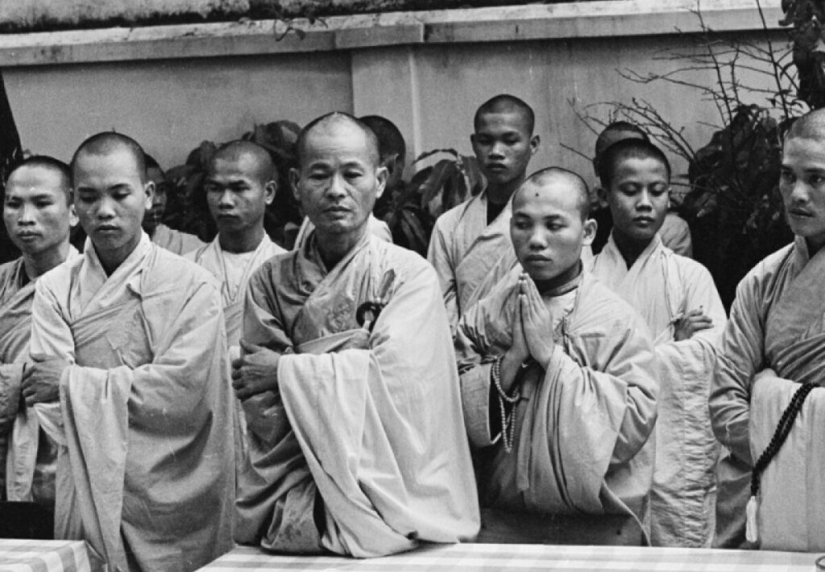
People could not stand the pressure and became Catholics for the sake of the safety of their families, obtaining material benefits, promotion in state or military service. Laws created by Ngo Dinh Diem's government soon helped the Catholic Church become the country's largest landowner.
May 1963 was a turning point in the confrontation between the Catholic authorities and the Buddhists. For the first time, the government has officially banned the celebration of the Buddha's birthday and the removal of the Buddhist flag in the city of Hue. But adherents of the traditional faith bypassed police cordons and defiantly brought the flag to the building of the government radio station.
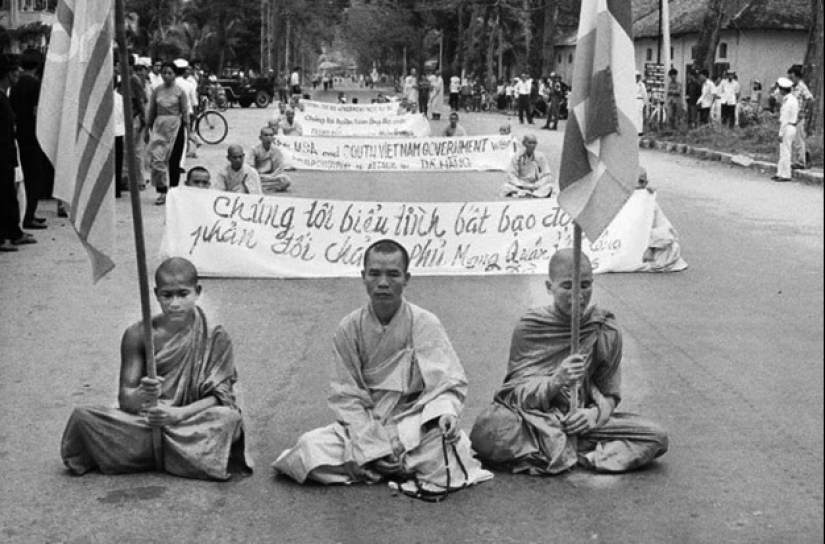
In response, the authorities decided on a monstrous crime and gave the troops an order to shoot into the crowd. The peaceful procession, which was attended not only by adults, but also by children, was shot at point-blank range with rifles and a machine gun. Then 9 people were killed and several dozen citizens were injured.
On June 10, 1963, journalists of foreign agencies working in Saigon were notified that something very important would happen on June 11 in the square near the Embassy of Cambodia. But no one revealed the details of the event, so many representatives of the press did not take the appeal seriously. Although some still came to the square.
There was a crowd of Buddhist monks in front of the embassy building, which gradually grew. Someone counted 350 men in monastic robes, and someone more than 500. In the hands of the monks were posters in Vietnamese and French, with demands to stop the pressure on the Buddhists.
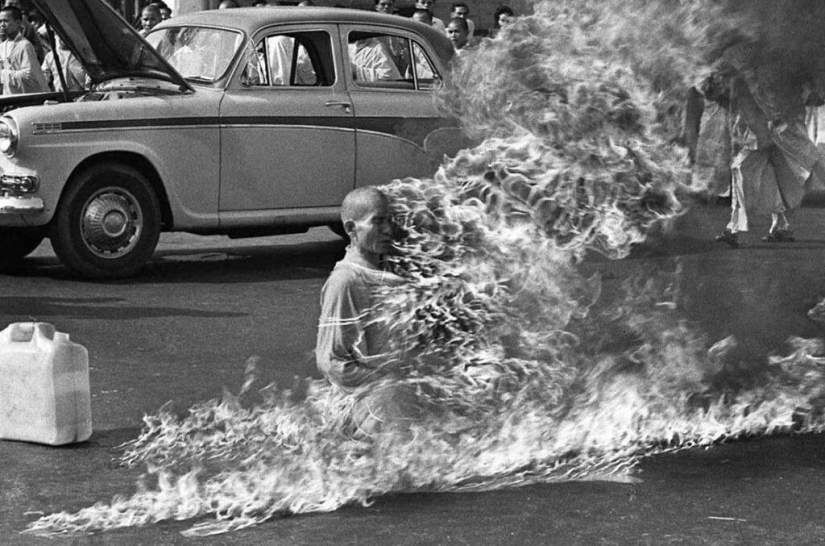
The action took place not far from the Presidential Palace, the approaches to which were prudently blocked by the police. Thit Quang Duc came to the square by car. He delivered a speech in which he called on President Ngo Dinh Diem for mercy and religious tolerance.
After finishing the address, the monk sat down on the ground and began to count the rosary. One of his companions brought a canister of gasoline and poured it over the Hole. After that, the monk himself struck a match and flared up like a torch. The square resounded with screams of horror and sobs. But the burning monk didn't make a sound or even move.
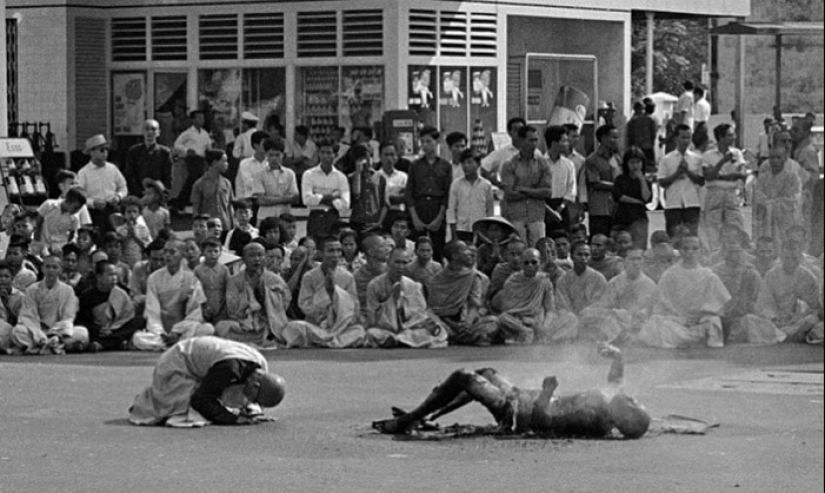
One of the policemen present at the rally ran up to the burning monk and fell to his knees in tears in front of him. Journalists made terrible shots of Thit Quang Duc burning alive, which became evidence of the self-sacrifice of this strong-willed man. Some citizens present at the rally claimed that they saw the face of a weeping Buddha in the sky above the square.
When the flame went out, the monks took the remains of their spiritual mentor. After all the necessary ceremonies, they were cremated on June 19, 1963. The ashes, in the presence of 400 monks from different parts of Vietnam and Cambodia, were buried in a Buddhist cemetery near Saigon.
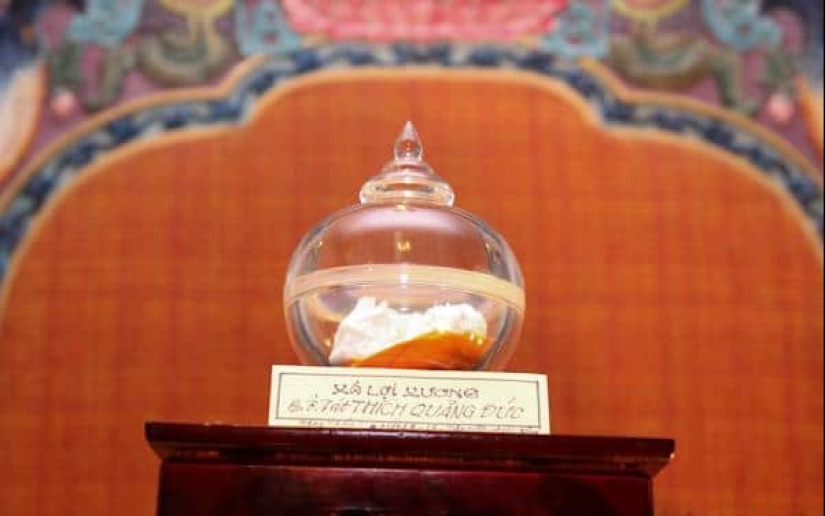
Witnesses of the self-immolation claimed that the fire did not touch the heart of Thit Quang Duc. It was removed before cremation and placed in a vessel. The relic was delivered to the Ksa Loi Pagoda– the largest temple in Saigon. A monk who sacrificed himself for the sake of faith was recognized as a bodhisattva - achieved enlightenment.
Photos of the burning Thit Quang Duc flew all over the world. They were published by the most famous publications of the four continents. The action was discussed by ordinary people, politicians, monarchs and presidents. The monk's self-immolation caused a strong international outcry and a wave of accusations against President Ngo Dinh Diem.
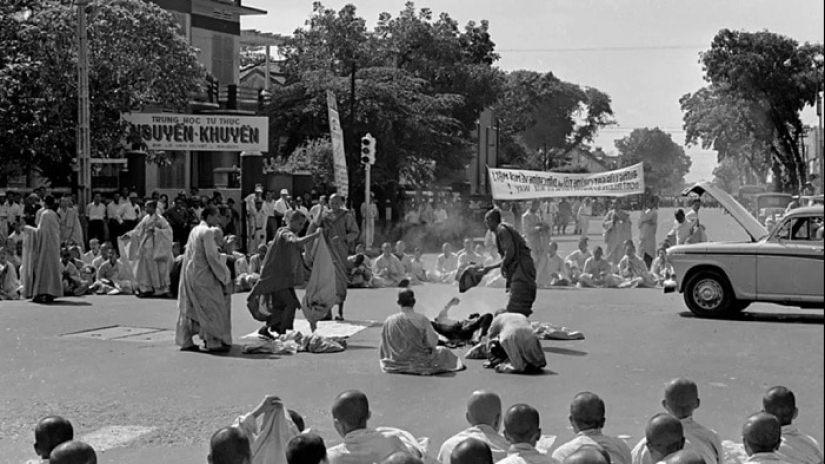
The head of Vietnam, under pressure from the world community, was forced to announce the rehabilitation of Buddhists and the cessation of persecution. But in fact, little has changed and the repression continued. The confrontation between the authorities and believers resulted in open clashes in the autumn of 1963. The troops even attacked the Ksa Loi Pagoda and captured the shrine - the heart of the Dyk.
But these were already the last convulsions of the reactionary regime of Siem. At the end of 1963, a coup took place, as a result of which the tyrant was killed. Thus, after the monk's death, the regime lasted less than six months.
The example of Thit Quang Duc was later followed more than once by other monks and ordinary people. This happened at different times in different countries of the world. So they protested against the occupation of Tibet by China, the Vietnam War, as well as against other repressions.
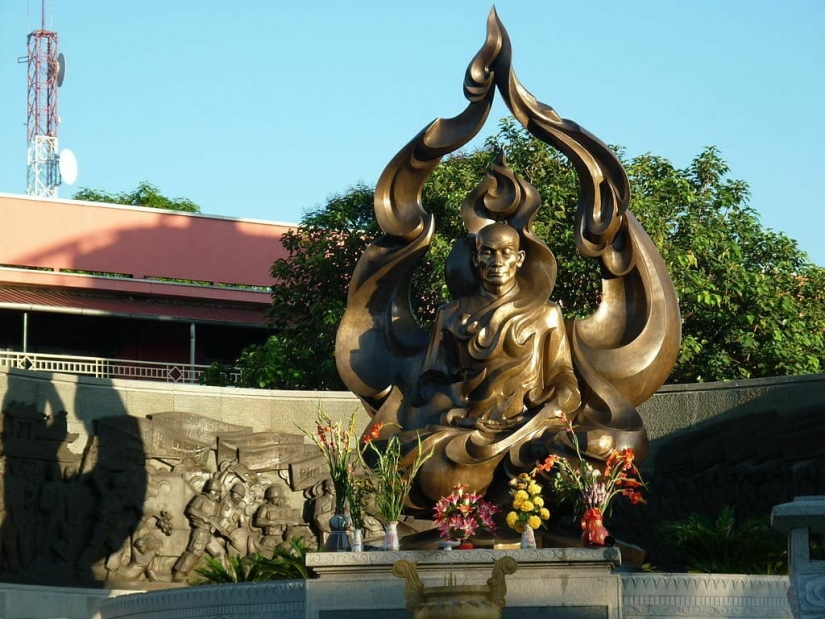
Now in Ho Chi Minh City, formerly Saigon, there is a monument to Thit Quang Duc. There are always a lot of flowers and sacrificial offerings near him. For most Vietnamese, a monk is a saint who suffered martyrdom in order for them to have freedom of choice.
Recent articles

The expression "in the middle of nowhere" is known to everyone. It can often be heard in conversation when talking about ...

No matter how long a person lives in the world and no matter how much new knowledge he receives, there will always be something ...

Hard life is for perfectionists in our world full of chaos, disorder, and a ridiculous design! Watch the compilation errors that ...